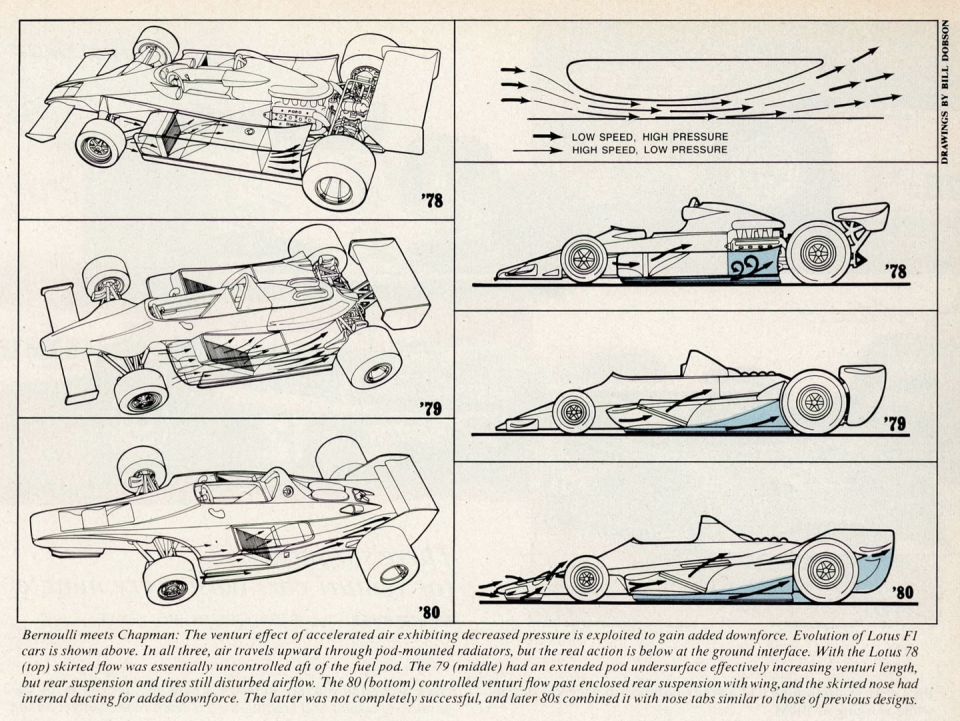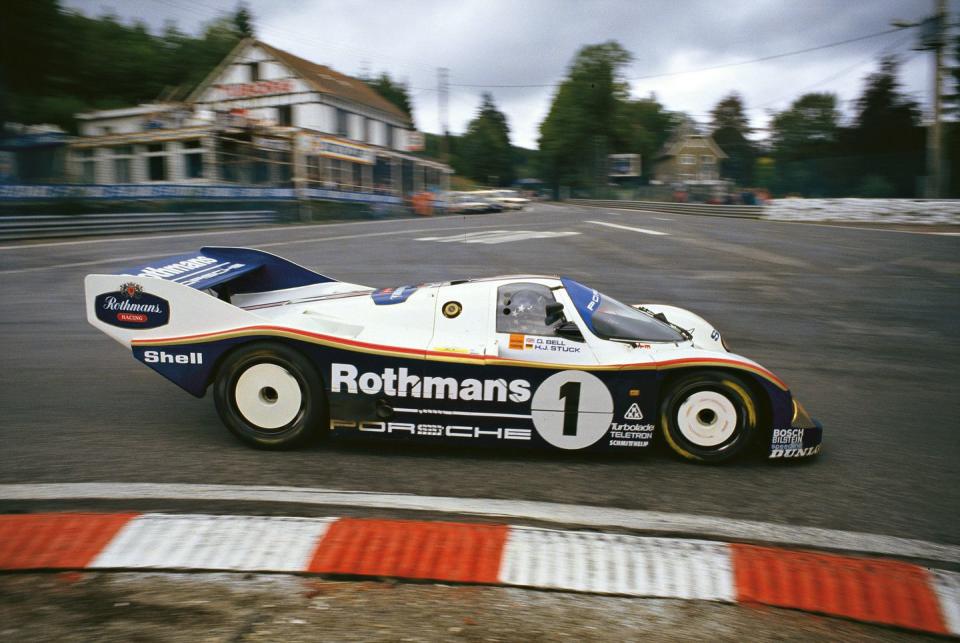Why Porsche Doesn't Use a Flat-Six in Its Modern Prototypes


Porsche has long been defined by the flat-six. It's powered the 911 for nearly 50 years and has been behind many of its greatest motorsports achievements. Except, Porsche hasn't put one in a sports prototype for almost 25 years. The last was the 911 GT1 of 1998. Its successor, the LMP2000, was canceled before it ever raced.
Originally, that car, codenamed 9R3, was to get a flat-six, but its designer Weit Huidekoper said it wouldn't work. “If looks could kill I would not be around anymore,” Huidekoper recalled in an interview with motorsports-history site Mulsanne's Corner, “when I mentioned the traditional Porsche flat-six engine as the design's major weakness!" Flat-sixes were Porsche, and nobody wanted to hear that the layout was holding them back. "Previously this engine concept had been their strength, now it was old fashioned and their weakness."

What was that weakness? Aerodynamics. In fact, a single innovation knocked out the flat-six, though you wouldn’t know it if you looked at results alone. Porsche seemed to have a winning formula with its tried-and-true turbo flat six formula, but when you dig deeper you’ll find that the company had been stretching it out for decades past its sell-by date. Flat-six Porsche prototypes spent years winning in spite of their engine’s performance, not because of it. To understand this aerodynamic problem, we have to dip into some history.
When Huidekoper talks about the "traditional Porsche flat-six," traditional is the key word. In the Seventies, Porsche began turbocharging the 911's flat-six—already a decade old at that point—to great effect. Turbocharged flat-sixes powered the triple Le Mans-winning 936 prototype and the popular 934 and 935, the latter of which got its own Le Mans win in 1979. This was an effective program and an efficient one, too. The turbo flat-six was a do-it-all engine. Lessons learned preparing it for a failed run at the 1980 Indy 500, for instance, were folded back into Porsche’s Le Mans program and racked up a win there in 1981. Even by that point, however, the writing was on the wall.

An expiration date emerged in 1977. Lotus debuted the 78, the first Formula 1 car to take advantage of ground effect, wherein the entire car acts like an upside-down airplane wing. This design creates a low-pressure area underneath the car, effectively sucking it to the ground. Ground effect was perfected with the 78's successor, the 79, which won the 1978 world championship with Mario Andretti at the wheel. Competitors had to develop ground-effect cars of their own, or get left well behind.
Ground effect was achieved by venturi tunnels on either side of the car designed to accelerate air, creating the desired low-pressure effect. Lotus, like so many other Formula 1 teams, used Cosworth DFV V-8s, and as this engine was fairly narrow, it made adding venturis on either side quite easy. With a flat engine, the cylinder banks, laid flat on the floor, were right in the way of where you'd put the venturis. Brabham, which used long, wide Alfa Romeo Flat-12s, couldn't add venturis as simply as Lotus. Designer Gordon Murray came up with a sly way of achieving ground effect, an engine-driven fan that sucked air out from under the car. "The fan car, the BT46B, was born out of necessity," Murray once said in a documentary. "Right where you needed the space, we had a flat-12 engine," he said. The fan worked exceedingly well, but was quickly withdrawn over fears it would create a political firestorm.
At the end of the 936's life in 1981, Porsche got to work developing a successor, one that would fit the new Group C regulations for sports prototypes, the 956. Under the leadership of Norbert Singer, the designers looked around at what was state-of-the-art, and naturally, their attention turned to ground effect. Using a flat-six gave Porsche the same issues as Brabham. Things weren't quite so bad, as it didn't have the length of three additional cylinders per side, but the flat-six was arguably one of the 956's biggest weaknesses. Still, regulations dictated that a Group C car was much wider than an F1 car of the day and required a production-based engine. It seemed more sensible to Porsche to evolve its flat-six rather than, say, make a race engine out of the 928's V-8, and history shows it was the right decision.
The width meant that where the Lotus and other ground-effect F1 cars sealed off their underbodies with ground-scraping skirts, the 956, allowed in air from the sides. Regulations stipulated that the floor under the cockpit had to be flat, too, so the 956's venturis began closer towards the rear of the car, running beneath the rear subframe. The company developed two floors for the 956—a higher-downforce short tail, which incorporated a very small diffuser behind the front axle, and the lower-drag long tail, with front diffuser deleted and the side venturis elongated.
What you don't often hear in the story of the 956 and the later 962 was that it wasn't the fastest Group C car. Thanks in large part to its Ferrari twin-turbo V-8, the Lancia LC2 outgunned the 956, regularly taking pole positions in 1983 and 1984. Yet Porsche kept on winning as a result of the far superior reliability of its flat-six. Porsche continued to dominate Group C in 1985-1986, but 1987 saw the World Sportscar Championship go to Jaguar, and the following year, the English automaker ended Porsche's seven-year winning streak at Le Mans. It would be another seven years before Porsche won Le Mans again.

Singer knew the flat-six presented Porsche with problems. "The wind tunnel had shown that we could improve downforce with narrower tires and wider diffuser channels," he said in a Porsche article on the 40th anniversary of the 956. When the 956 evolved into the 962 for 1985, the 18 x 16-inch rear wheels were substituted for 19 x 14-inch units, which allowed the venturis to be 50 mm wider. Still, it wasn't enough for Porsche to stop Jaguar, then later Sauber, Jaguar again, then Mazda.
The end of Porsche in Group C came as a result of FIA politicking, but in any case, the 962 was looking very out of date by the early Nineties. Note, too, that aside from the also-narrow rotary-powered Mazda, all of Porsche's rivals had V engines. Still, the flat-six refused to die, thanks to some strange loopholes.

Production-based cars were to run at Le Mans in 1994, so Porsche had the clever idea of tapping Jochen Dauer, who was building a handful of street-legal 962s out of formerly raced cars, to enter the 962 in the GT1 class. Thanks to some loopholes that benefitted GT1 cars over Group Cs, plus the car's legendary reliability, Dauer 962s finished first and third.
In 1996, IMSA's WorldSportscar prototypes were allowed at Le Mans, so Porsche and Tom Walkinshaw Racing (TWR), which ran Jaguar's successful program, modified the highly advanced XJR-14 with new open bodywork and a flat-six. In V-10-powered Jaguar form, the car qualified second at Le Mans in 1991 with a 3:31.912; as the TWR-Porsche WSC-95, it only managed a 3:41.581 in 1997. Still, the WSC-95 won in 1996 and 1997.
The old workhorse flat-six gave Porsche yet another Le Mans win in 1998. Both Mercedes and Toyota showed up with faster GT1 cars than the 911 GT1-98, though once again, reliability got Porsche across the finish line first.
Which brings us back to Weit Huidekoper. He knew that there was only so much Porsche could get out of a design whose origins went back 35 years. The old flat-six was also never designed to be a stressed member of a race car's chassis, where the engine replaces the rear subframe, saving weight. F1 cars have used engines as stressed-members since the Sixties, but it took a little longer for that to come in vogue with sports cars. Huidekoper's objections to using the flat-six briefly led to the cancellation of the 9R3 program, but Singer and other higher ups decided that if Porsche skipped the 1999 season, it could enter in 2000 with a V-10 Porsche years earlier developed for the Footwork F1 team, but never raced.
(Porsche did have history in Formula 1, designing the "TAG Turbo" V-6 for the very successful McLaren MP4/2 and later MP4/3. Even in the mid-Eighties, it knew that a V-type engine was the only way to make a car with underbody aero work well.)
Porsche killed what was to be called the LMP2000 to fund development of the Cayenne, a shrewd if unromantic decision. It re-entered prototype racing in 2006 with the RS Spyder, which sported a V-8 derived from the racing V-10 (which went into production in the Carrera GT road car). By this point, formula cars and sports prototypes relied on a mix of over and underbody aero, so V-type engines were still preferable. When you look at a top-down photo of an RS Spyder, the teardrop shape formed by the cockpit as it leads into the engine cover makes it obvious why a flat-six would never work. Even more so for the 919 LMP1 raced between 2014-2017, powered by a bespoke V-4 engine that represents a packaging masterpiece.
The new Porsche 963 LMDh uses an evolution of the RS Spyder's V-8, now with two turbochargers. There's nothing in the LMDh regulations preventing the use of a flat-six, but most of the dimensions of the car are proscribed, giving OEMs a very specific box to work within. A flat-six would almost assuredly be too wide to fit here, so V-8 it is. Indeed, all LMDh cars use V-type engines, V-8s for Porsche, BMW, Cadillac, and the upcoming Lamborghini, a V-6 for Acura. Cars built to Le Mans Hypercar regulations, including the new Ferrari 499 P, Peugeot 9X8, and the Toyota GR010 all use a V-6, while privateer Glickenhaus uses a V-8.

One imagines the packing in the Ferrari must be difficult, as the 499 P's engine is related to the unusually wide 120-degree V-6 used in the 296 road car and 296 GT3 race car. It might yet give Ferrari the best of both worlds—narrow package of a V-6, lower center of gravity more akin to a flat-six.
Really, it's amazing Porsche stuck with the flat-six in its prototypes for as long as it did. It's a mix of the company's preference of careful evolution of proven technologies over revolution, and that even in the world of endurance racing, where reliability beats speed, nobody can escape the laws of aerodynamics.
You Might Also Like

 Yahoo Autos
Yahoo Autos 